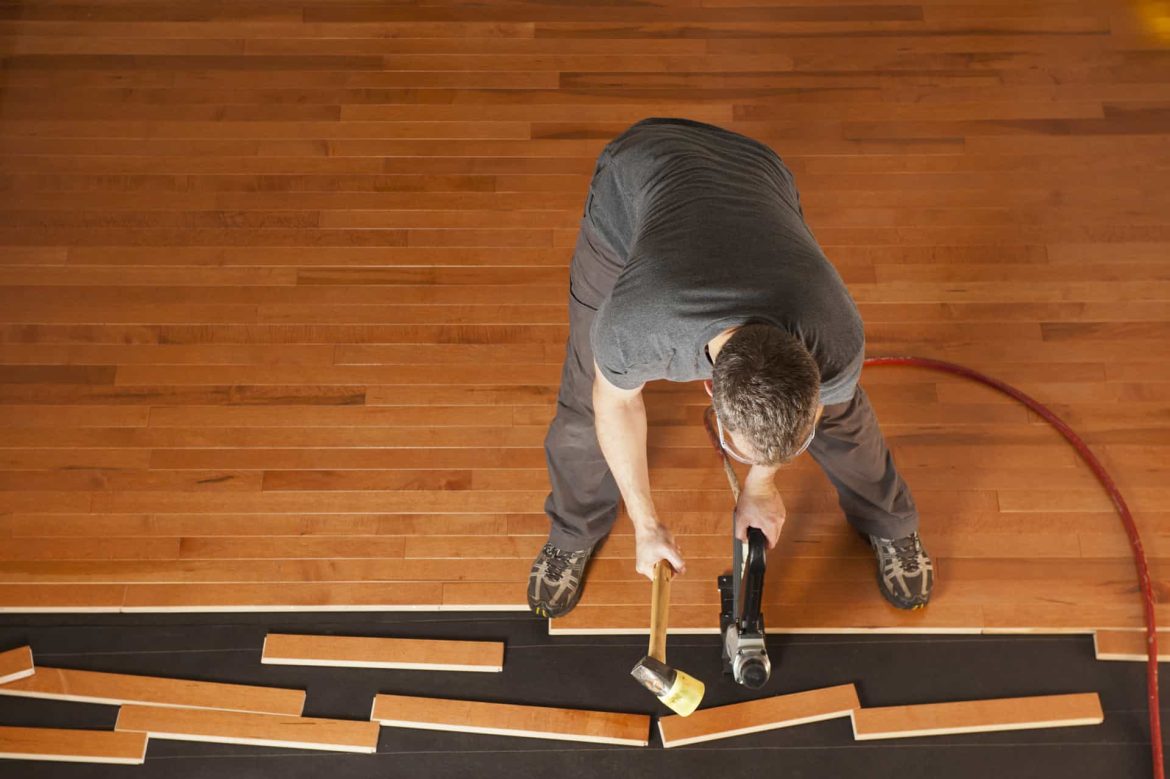If you’re thinking about getting a new floor installed, there are a few things to keep in mind. You’ll need to prepare the area, choose the right tools, and be careful about safety.
Preparation
There are a number of preparations required before a new floor can be installed. While some things can be done quickly, there are other things that may require more time and effort. Fortunately, following the right steps can save you from a lot of hassle and frustration.
The best way to find out how much prep you need is to talk to an experienced flooring estimator. These professionals have been there and done that. They can provide you with a good idea of what you can expect in terms of surface and sub-floor preparation.
One of the simplest and most obvious preparations for a new floor is to clear the old one. This may include removing any furniture, artwork, or other items that are on the walls. In addition, it may also involve removing any utilities.
Subflooring
When installing new flooring, the subfloor is a critical part of the process. It affects the function and appearance of the flooring. Having a good subfloor can help your floors last longer and protect them from water damage.
The most common type of subfloor is plywood. However, Oriented Strand Board (OSB) is also used for some installations. OSB is a thick, rigid material that is made by pressing wood chunks together. This subfloor is often used for basements and crawlspaces.
Plywood is a higher quality product than OSB, although it is more expensive. Plywood is usually manufactured in 4 by 8 foot sheets. These panels are attached to the floor joists with nails every eight inches.
Particleboard is a less expensive alternative to plywood. It is a combination of sawdust and wood particles that are pressed together. However, it is more prone to moisture damage.
Tools Needed
If you’re planning on installing hardwood flooring, laminate flooring, or luxury vinyl tile, you’ll need a variety of tools. Using the right tools can help you install the floor correctly and quickly. In addition, improper installation can cause irreversible damage.
A hand saw is useful for cutting materials for the floor. It can be used in areas where a table saw might be too bulky. Hand saws don’t produce much dust, and they’re easy to use.
Using a level is important for flooring installation. You’ll need to level the subfloor and check the horizontalness of the surface. When you’re working with a new piece of furniture, it’s a good idea to protect yourself with a protective jacket and gloves.
For laminates, a Skill saw is an essential tool. The blade can be set to make miter cuts, or be extended to create straight lines. This tool can also be used to measure the height and width of the flooring.
Safety Precautions
There are a lot of accidents at work due to poorly installed floors. These incidents can lead to injuries and death. But if you know the right floor safety precautions, you can reduce the risk of such incidents.
Floors can be installed in many different ways. Some of the most common include using plywood or steel plates to protect the workers. Using floor mats can also prevent slips and falls.
Flooring installers commonly kneel while working. It’s a good idea to wear knee pads for extra protection. You should also check the ground for cracks or other defects.
If you must use a forklift, avoid loading near the floor tape. Similarly, don’t turn a wheel or brake on the tape. In addition to being a safety hazard, this can lead to premature aging of the tape.
Costs
There are many variables that can affect the cost of floor installation. They include the type of flooring, location, and the experience of the flooring professional. The costs also vary due to the size of the room.
Depending on your home and the material you choose, the costs can range from $1,500 to $4,500. Flooring jobs in urban areas are often more expensive, while the costs in rural or remote areas may be lower.
The most important variable to keep in mind is the price per square foot. The cost of labor is also a factor. Typically, the higher-end flooring costs more than the lower-end.
Another variable to consider is whether you will be removing your old flooring. Some contractors require you to remove your old floor before they can install your new one. In this case, you will have to factor in extra labor and disposal costs.

